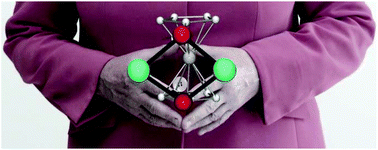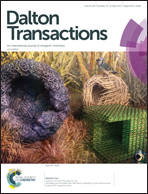Abstract
This paper focuses on ferrocene-based secondary diphosphines of the type [Fe{η5-C5H4(PHR)}2] with P-substituents of distinctly different steric and electronic properties, namely methyl, neopentyl (Np), tert-butyl, phenyl and 3,5-bis(trifluoromethyl)phenyl (XyF). The reaction of [Fe{η5-C5H4(PHPh)}2] (H21a) and [Fe{η5-C5H4(PHt-Bu)}2] (H21b) with n-BuLi in the presence of TMEDA afforded lithium diphosphides of the type [Li2(μ-1)(TMEDA)2], which contain a cyclic non-planar Li2P2 core. The analogous reactions of [Fe{η5-C5H4(PHMe)}2] (H21c) and [Fe{η5-C5H4(PHNp)}2] (H21d) furnished dimeric aggregates exhibiting a ladder-type Li4P4 motif, viz. [Li4(μ-1c)2(TMEDA)3] and [Li2(μ-1d)(TMEDA)]2. H21e (R = XyF) did not afford a stable lithium diphosphide. A Brønsted metathesis with Zr(NMe2)4 was possible with the aryl-substituted compounds H21a and H21e, leading to products of the type [{Zr(NMe2)3}2(μ-1)]. In contrast, the alkyl-substituted congeners H21b–H21d were inert towards Zr(NMe2)4. The reaction of [Fe{η5-C5H4(PHR)}2] with nickelocene afforded intractable mixtures of numerous products in the case of H21c and H21e. In the other three cases, compounds of the type [(NiCp)2(μ-1)] were isolated. For H21b and H21d a two-stepped reaction via a phosphino–phosphido intermediate of the type [NiCp(H1)] was observed, which could be isolated and fully characterised in the case of [NiCp(H1b)].



 Please wait while we load your content...
Please wait while we load your content...